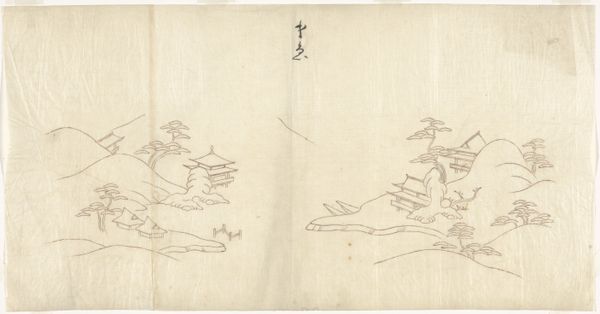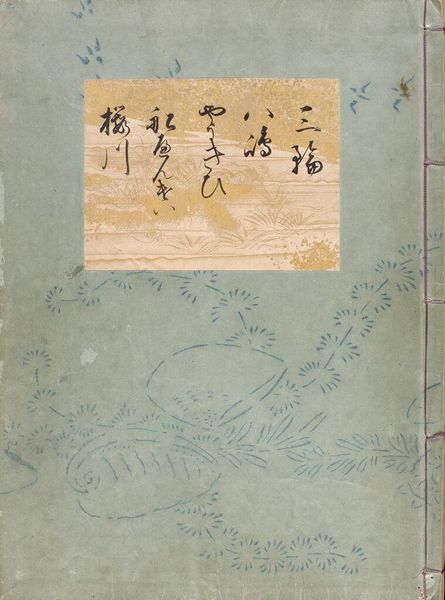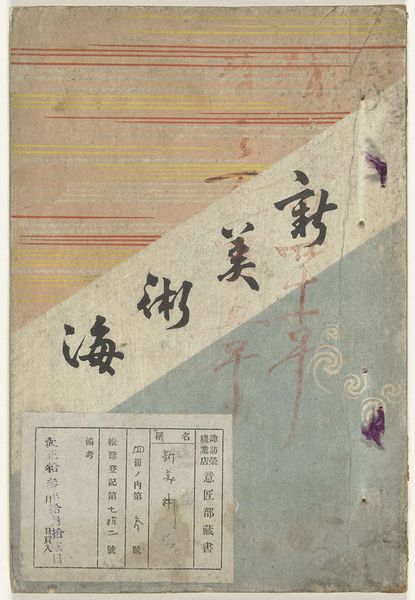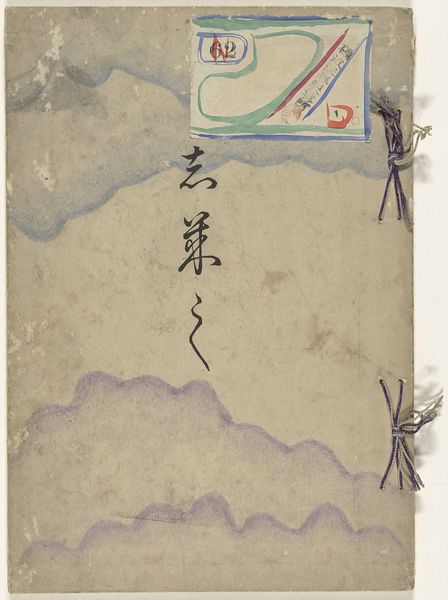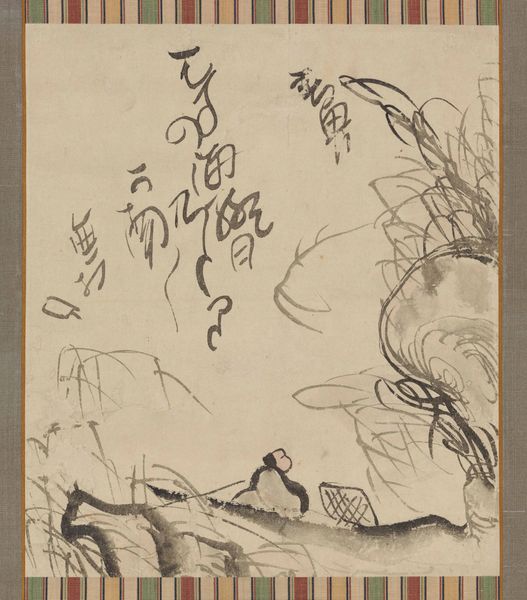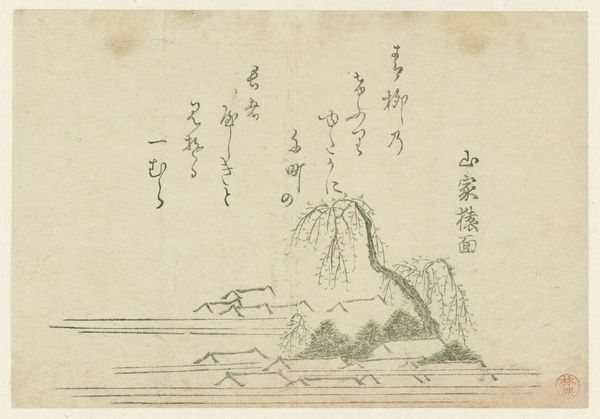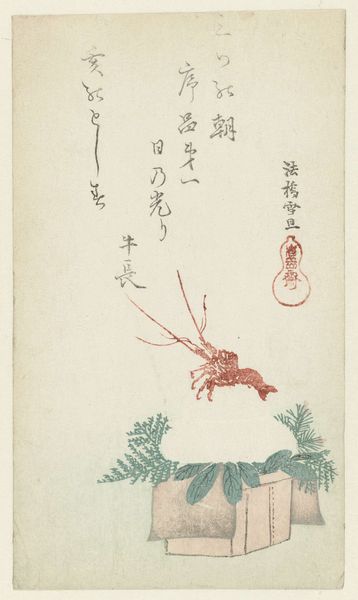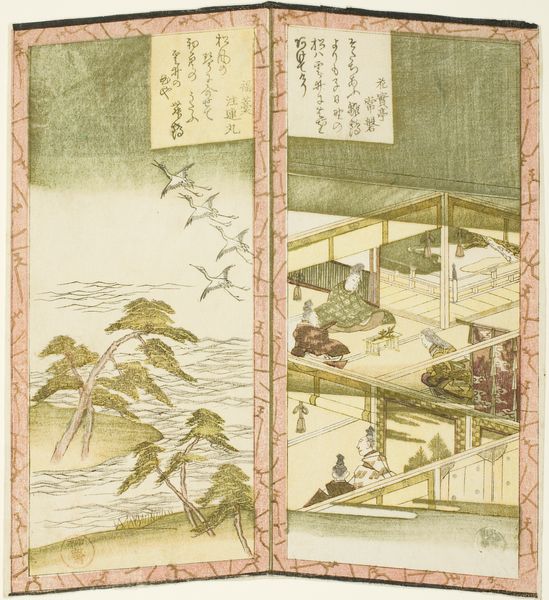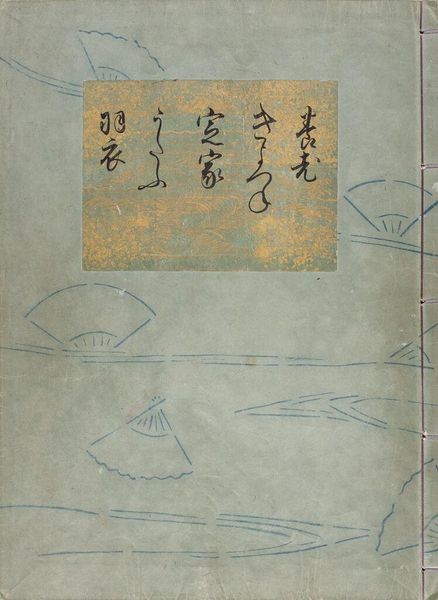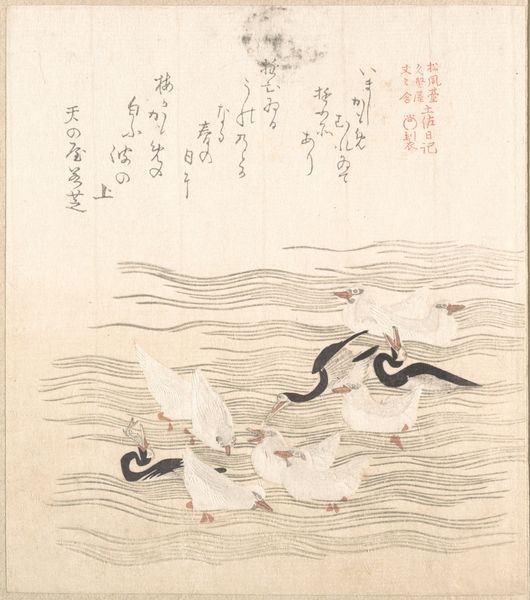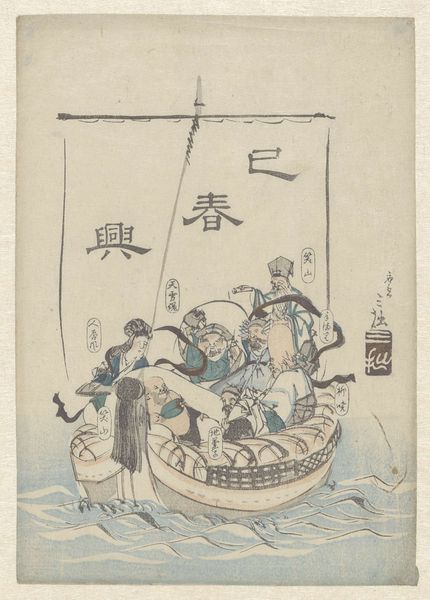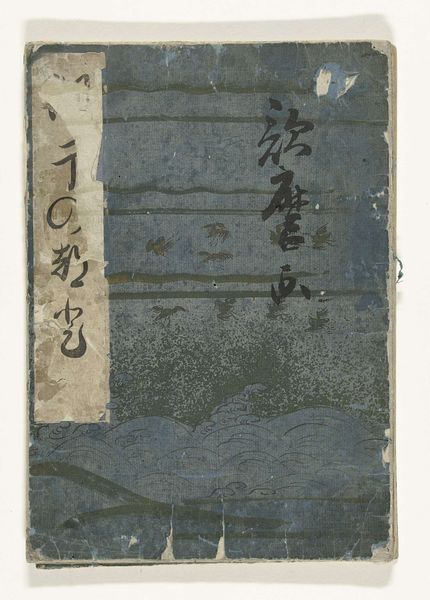
Dimensions: height 240 mm, width 168 mm
Copyright: Rijks Museum: Open Domain
Curator: Welcome. Here we have Kamisaka Sekka's, "Het voorkomen van de hoofdstad", made between 1890 and 1892. Editor: Immediately, I'm struck by the overall monochrome impression. There's a subtle elegance to the landscape suggested through a simple pencil technique. The composition seems to divide into sections or planes which provides this wonderful layering and an aerial perspective, very pleasing and relaxing overall. Curator: Precisely. Look closely at the quality of the line work itself. See how Sekka varies the pencil pressure to create depth and shadow? There’s a structural harmony achieved with the arrangement of these elements, especially given the use of implied lines throughout to indicate shapes rather than completely closing forms. Editor: I notice repeated circular forms floating through the piece. They appear almost as water lilies or boats on water, depending on your interpretation and they introduce a quiet cyclical rhythm, a sort of watery mandala here, particularly grounding the boats visually. This really adds depth to my perception of the landscape. Water and boats often mean journeys in symbolism, both physical and spiritual, and the cyclical nature emphasizes recurrence or perseverance. Curator: Indeed, you might observe too the use of blank space to indicate vastness, an elegant formal tactic for communicating an idea using minimal visual cues. Also, let’s look closely at how the lines of the waves mirror the rigging and architecture of the boats. There is a really tight structural repetition. Editor: A lot is suggested rather than depicted literally here. The texture, I feel, pulls me toward the imagery and then encourages me to reflect on our place within natural cycles, our small boats on an ocean both nurturing and, at times, perilous. It speaks of resilience and continuous navigation. Curator: This emphasis on a minimalist depiction through tone and form brings out the essence of landscape tradition but, without heavy embellishment or ornamentation, strips the image down to just its architectural integrity. Editor: Yes, I feel a very quiet confidence about it. A real meditation on nature’s forms as reflections of the human journey. Curator: Absolutely. Sekka presents us with such an economy of line to achieve harmony, that we can’t help but appreciate his visual restraint. Editor: Well, seeing it from both your point of view and mine has added several new layers of meaning for me today!
Comments
No comments
Be the first to comment and join the conversation on the ultimate creative platform.
